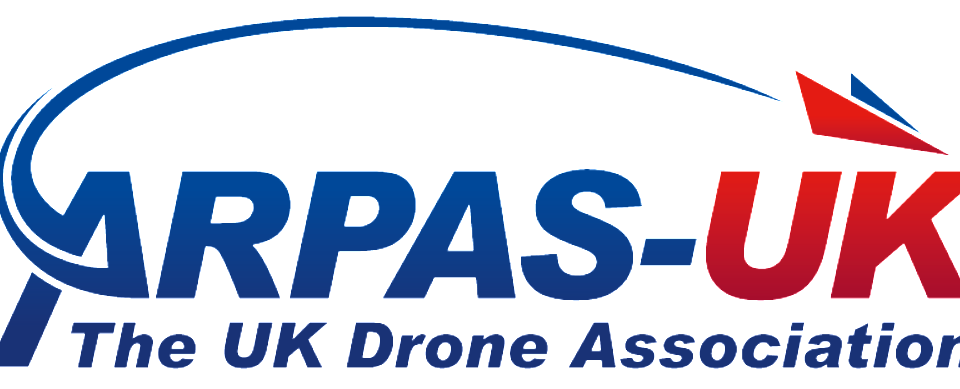

Skyfarer have built the UK’s first functional and operational hub, set in the center of their own hub-centric network being utilized for the Medical Logistics UK Corridor.
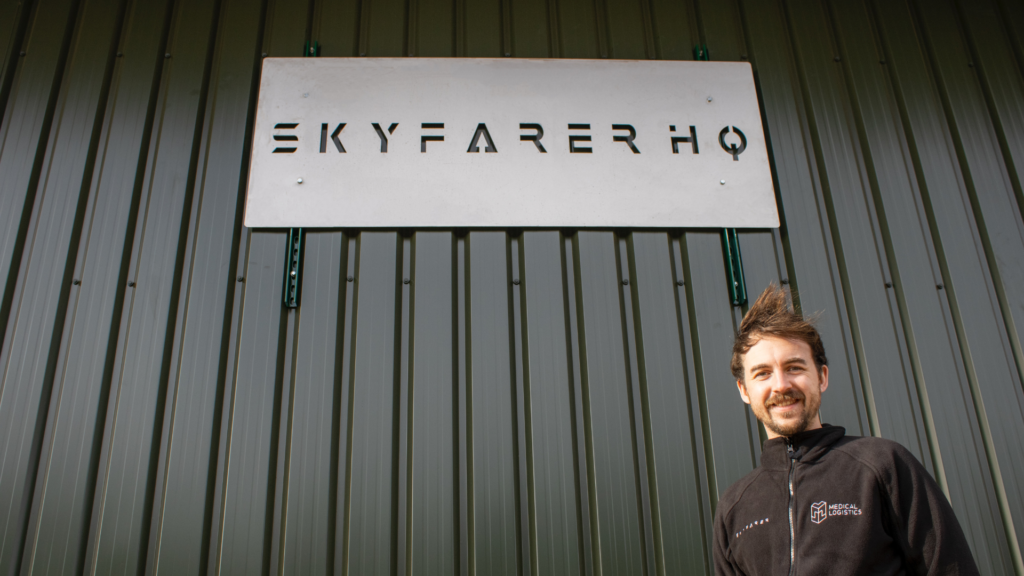
Businesses and organisations subscribe to utilise the full capability of the Skyfarer hub and network. As a result, they can turn their use case into a regulated, authorised, and economically advantageous drone operation.
Having a shared service hub means that access to this technology and capability is far more cost-effective whilst not diminishing utilisation. Each hub is being developed to serve a 40km radius connecting each spoke. Whether that be to deliver a product or provide a surveillance solution, the Skyfarer hub contains a drone fleet that is specifically designed and optimised for each operation you are desiring to achieve.
The heart of the Skyfarer Network of services is the hub, the “home of the drones”. This is a space where the drones are maintained, and operations are run for beyond visual line of sight (BVLOS) sorties.
The purpose of a hub-centric network is to centralize operations. This enables the Skyfarer team to run time-efficient and coherent flights that can be shared amongst end users. Meaning that services can be provided to customers cheaper, quicker and via means that are far more sustainable.
The Skyfarer hub contains a soundproof Operations room, a picking and packing station, an order management station, and a maintenance workshop. It also serves as the headquarters for the Skyfarer team.
The Skyfarer hub-centric network is being used for the first time as part of the ‘Medical Logistics UK Trial’ running from October to January. This trial links 2 hospitals managed by the University Hospitals Coventry and Warwickshire NHS Trust, to the Skyfarer hub and also enables a logistical connection between Coventry and Rugby local communities.
Skyfarer have chosen the West Midlands to set up its first hub due to its centralized location in the UK. This pertains to its history of innovation and technology development.
By 2030, Skyfarer sees a further 20 hubs spread out across the UK, to connect end users by the sky.
Email [email protected] to find out more about Skyfarer.
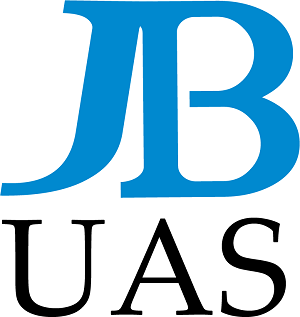
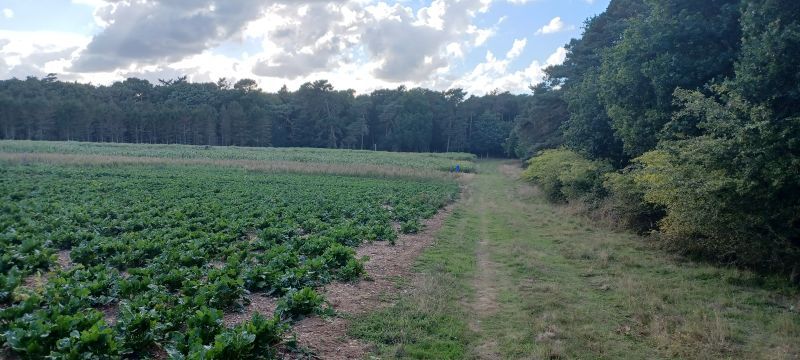
JBUAS supported a leading UXO company with equipment and training, to enable them to execute a 6km UXO clearance project over varied terrain, including undulating ground, fences and gates, hedges, and many different crop fields.
The Right Choice
The key contractor for the cable laying project was keen to see zero harm to the crops so damage could be avoided, along with any potential compensation payments. The airborne R4 magnetometer system was therefore selected as the system of choice. Cart or walked-based approaches were deemed too risky, and when the final economics were worked out, the use of the airborne system was a foregone conclusion.
Equipment Used
The airborne system comprised of:
– M300RTK drone (UAV)
– UgCS Pro (Survey Automation software)
– UgCS SkyHub 3 Onboard Computer
– UgCS True Terrain Following system (TTF v2)
– SENSYS MagDrone R4 Airborne Magnetometer
TTF, RTK, and R4
With a sample rate of 200Hz, the fluxgate sensors onboard the R4 enable fast speeds to be flown. The R4 also benefits from a sensor spaced every 50cm meaning its pass width is an impressive 2.5m. With RTK-corrected GPS data sent directly to the R4 from SkyHub, very precise flight lines (~1cm) are possible. Add to this the TTF system, which delivers the capability to perform low flying (below 1m if appropriate); the R4 can identify smaller targets in the near-surface.
To learn more about the project

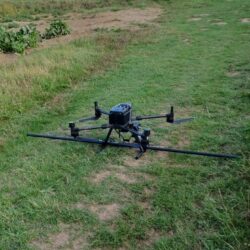


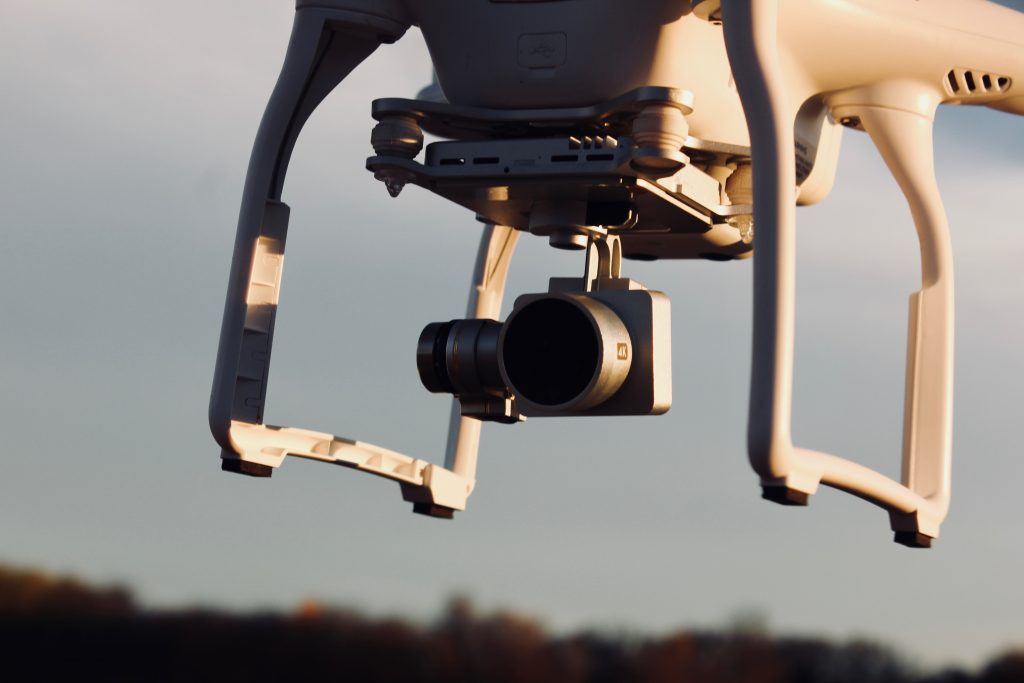
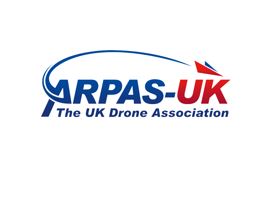
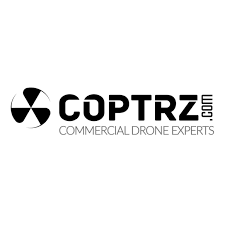

BT is pushing ahead with its adoption of drone technology and the training of its people. This is where COPTRZ came in.
As a leading CAA registered RAE’s (Recognised Assessment Entities), BT chose COPTRZ for their
capability to provide not only drone pilot training but also additional bespoke wraparound training solutions.
In addition, COPTRZ have supplied state-of-the-art and drone technology from a number of different
manufacturers with a range of models for different tasks encountered.
COPTRZ initially curated a bespoke training week for a number of trainee pilots at BT’s site in Hereford.
After an intensive week, 10 students successfully graduated as pilots with a number of recommendations
that soon followed.
Richard Coles, BT Drone Solutions Field Systems Manager, said “Coptrz provided us with great expertise in our GVC training and procurement of Drones. They have a great team and give huge amounts of support where needed, we look forward to continuing working with them in the future”
Co-founder of COPTRZ, Steve Coulson commented – “We are excited and proud to work with BT as an
organisation looking to benefit from the huge advantages drone technology brings. We look forward to continuing to support BT with ongoing training and technology”
COPTRZ are a UK-based drone solutions provider for organisations wishing to adopt drone technology and the benefits it brings in terms of productivity, safety and cost savings. This ranges across, airframes, payloads, software, peripherals and training.

Blue Bear (BB) recently announced the release of their pioneering Hyper Enabled Soldier System (HESS) concept. This system will deliver wearable innovative technology to the next generation of warfighters and as a capability will empower them to maintain their battlefield edge over potential future adversaries within all domains.
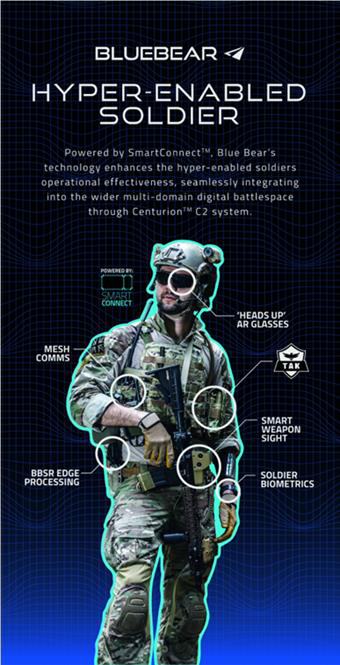
The Hyper Enabled Soldier System is underpinned by Blue Bear’s open architecture capability called SmartConnectTM which acts as a Smart Soldier Hub for all elements of this system, whilst being the individual interface enabler that is also integrated with Blue Bears edge processing.
Through the SmartConnect device the soldiers’ on-body sensors are made available to the wider swarm and in parallel the wider swarm’s capability becomes available to the soldier and decision makers to exploit for full battlefield effect. This process will optimise an operator’s sensor, decider and effector chain whilst allowing all decisions to be made at ‘Machine speed’ therefore reducing the enemies ability to react to counter these decisions.
The broader battlefield picture created by the above integration is then fused into Blue Bear’s CenturionTM C2 system, whilst the tactical C2 is delivered through Android Team Awareness Kit (ATAK).
This end-to-end operational interface places the military operator in the same digital operating picture as all other multi-domain vehicles and assets, therefore providing military decision makers the ability to co-ordinate all military elements and assets quickly by allowing them to ‘See through the battlefield’ at any given moment.
When discussing the HASS project Blue Bear’s Managing Director Ian Williams Wynn said:
Historic and current global conflicts have created a battlefield environment that is congested, confusing and very difficult for both the operator and military leaders to co-ordinate rapid, accurate and decisive kinetic effect to grasp the advantage from the enemy. Blue Bears Hyper enabled Soldier System will empower military operators and decision makers ability to rapidly cultivate battlefield data and integrate it quickly and efficiently to other assets and platforms across any battlefield environment.
Jon Longstaff – lead engineer on the HASS project said
Project HASS’ ambition from the very beginning was to deliver an innovative system that can make the human-machine interface closer than ever within a complex battlefield environment. This system will increase Command and Control (C2) exponentially.
Contact Info
Jack Hills – [email protected]
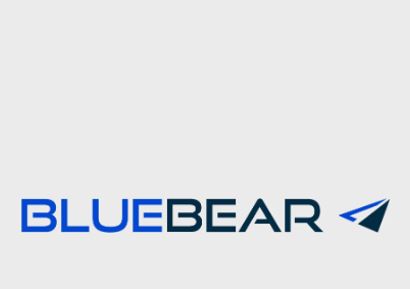


Disclaimer: All jobs posted here are from LinkedIn including member and non-member organizations.
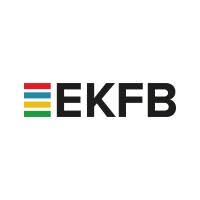
Eiffage Kier Ferroval BAM are looking to recruit Drone Pilots to support their survey team.

Animal Dynamics Limted are looking to recruit a UAS Regulation Manager (UK).

ARPAS-UK Member TEKEVER are looking to recruit a Remote Pilot (UK).

Animal Dynamics Limited are looking to recruit a UAS Remote Pilot / Operations Assistant.

Volatus Aerospace are recruiting for an RPAS/UAS Instructor to join the team.
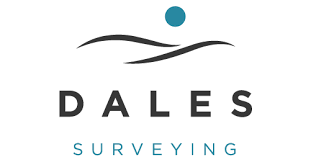
Dales Surveying Limited are looking to grow their team of UAV Pilots.

Flylogix are recruiting for a Test Pilot for Fixed Wing UAVs and an Electro-Mechanical Technician (UAVs).
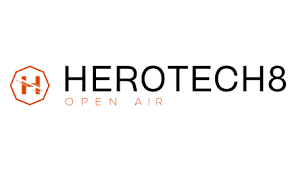
HEROTECH8 are looking to recruit an Innovate Programme Manager.
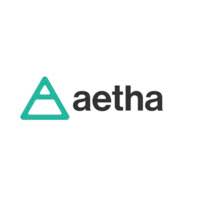
ARPAS-UK member Aetha are recruiting for a Trainee Drone Pilot and a Junior Drone Technician.

Airbus are looking to recruit flight crew for Zephyr.

Wingtra are looking to recruit a UK & Benelux Channel Sales & Business Development Manager.
A great opportunity with plenty of scope for growth.

The Open Category transition period is extended in the UK to 1 January 2026 following a formal decision announced by the Department for Transport.
It follows the outcome of the CAA’s consultation published last June where 70+% of the 4500 respondents favoured an extension beyond twenty-four months. ARPAS-UK was in favour of a 24 months extension.
Presumably, respondents voted for the ability to use their legacy drones beyond December 2022… and may not have considered that the transition extension would also trigger the postponement of class marking drones in the UK.
To be fair, in Europe, the implementation of Class marking has also taken more time than anticipated. The transition period is extended to 1 January 2024. Identifying and nominating the notified bodies that would perform the homologation, defining precisely the standards for drone class identification labels and going through the process of certification with the drone manufacturers has taken time. We know of 2 CE marking drones to date:
Coming back to the UK, our understanding is that the EU class marking has no UK legal recognition. Drone manufacturers sell global products and those drones will probably be sold on the UK market. Operators will enjoy the additional safety features, but it will not change the authorised operations and current thresholds:
3 years is a long time… Although it can be difficult to wisely react in the heat of the moment, maybe we could collectively consider a review milestone mid-2024 at the latest, to collect return of experience 6 months after the end of the transition period in Europe. Engagement with the drone ecosystem could contribute to that review. Also, addressing that stumbling block of identifying the UK organisations, the so-called “notified bodies”, that would deliver those class marking accreditation in the open, but also in the specific or certified categories.
ALS